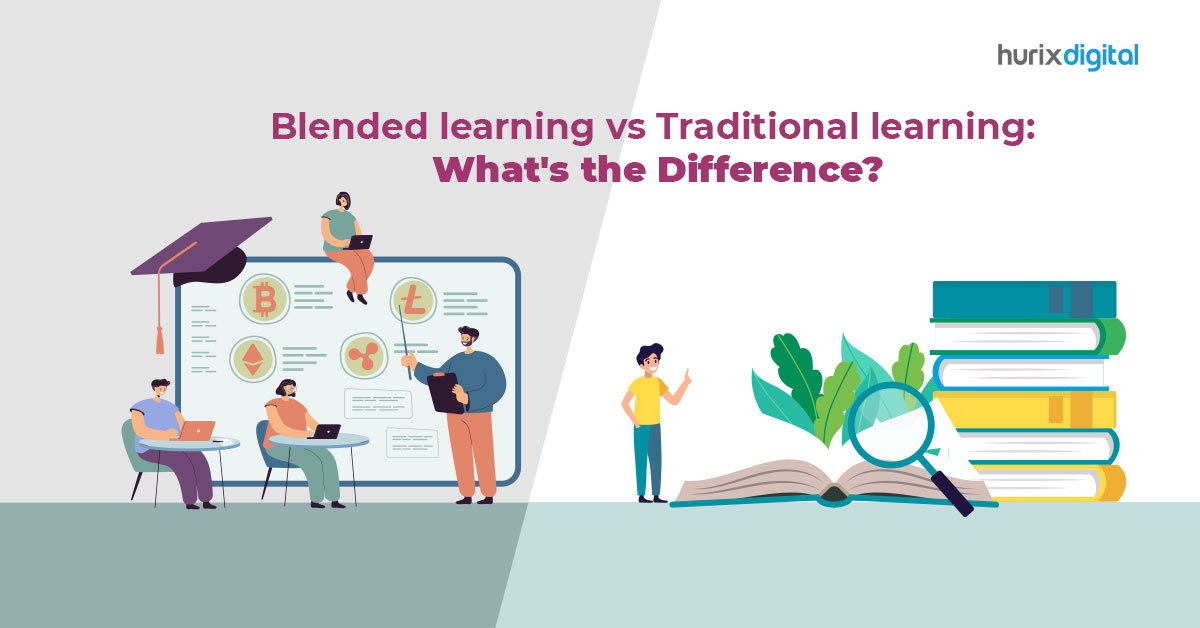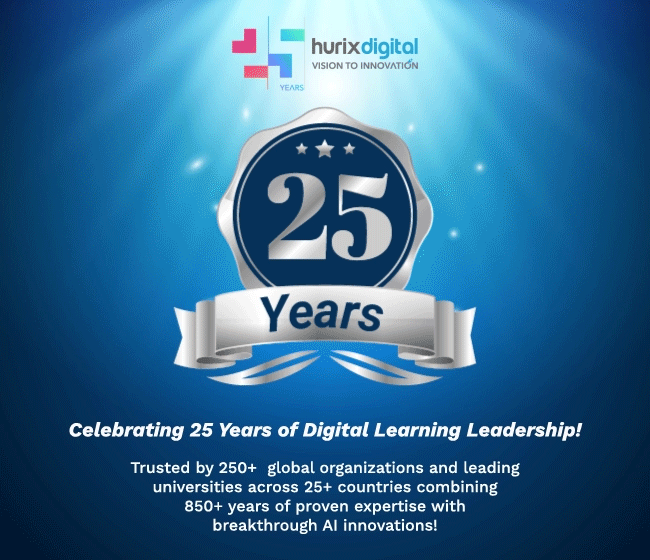
7 Ways to Get the Best Out of Blended Learning Solutions
Summarize with:
This blog talks about ways to get the best of blended learning solutions.
As digital transformation sweeps modern-day organizations, the need to close the gap between employee skillsets and emerging technologies has never been more critical than it is now.
Since there aren’t many qualified candidates out there who are well-versed with up and coming technologies, upskilling the existing workforce makes for a better choice than fresh hiring. Having already been a part of the organizational setup, your existing employees know the work culture and ethos.
As such, training them in newer technologies such as Machine Learning, AI and Data Science is more practical and cost-effective. And with the right strategy, this can be accomplished without compromising the output of their current roles.
Blended learning solutions have often proven to fit into that ‘right strategy’ perfectly. This is primarily because the process of learning itself has undergone a massive transformation in recent years. Workshops and seminars have now been replaced by learning technologies and platforms.
While e-learning has more than its fair share of benefits, it eliminates the element of human touch, which can adversely affect the engagement on the learners’ part. With a genuinely blended approach to employee training, enterprises can improve outcomes vastly through a ‘learn by doing’ approach.
Learn Is Blended Learning the Right Approach for Your Enterprise?
Let’s examine what blended learning solutions stand for and their applications in employee training to understand why it makes sense from an economic and instructional perspective.What Are Blended Learning Solutions? The blended learning solutions approach combines e-learning modules with traditional classroom teaching practices, offering you the best of both worlds. It entails the involvement of a teacher along with e-learning tools.
Blended learning is designed to offer a personalized learning experience through a balanced mix of in-person and technology-based teaching methods. This helps improve the quality of learning since there is simultaneous access to e-learning tools as well as an expert instructor.
To top it off, blending learning solutions are incredibly versatile, with the scope to tweak the traditional and e-learning combination as per the training content and abilities of the learners. Blended Learning Solutions in Employee Training. The emergence of blended learning has resulted in impactful and creative training solutions. Enterprises from different industry verticals are adopting this methodology to meet their upskilling goals at lower training costs. Learn How Can Enterprises Get Better Training ROI with Blended Learning.
Here are some examples of blended learning solutions that can help make employee training more effective –
1. Flipped Classroom The flipped classroom approach uses a mix of two immensely successful traditional training approaches – face-to-face and virtual.
This is an ideal fit for a workforce with busy schedules, as it allows them to leverage employee training programs without having to compromise work commitments on account of attending lectures and conferences. Learn the Advantages of Blended Learning over Traditional eLearning Methods
In this model, employees inducted into a training program are provided with learning materials in advance, allowing them to bring themselves up to speed before face-to-face training.
The in-person training session then focuses on discussion and practical exercises to help the participants internalize the concept rather than discover it for the first time.
2. Flex Model The flex model is quite similar to the flipped classroom approach, except the primary focus here is on online learning, and only a small group of learners are exposed to face-to-face instructions.
The online training module is made available to the employees on their workstations to make the process more time effective. The employees who have been given access to face-to-face training can step in to offer one-on-one support to other participants of the training program.
Peer-based support is at the heart of this blended learning approach. As such, an organization must foster an environment where learners can collaborate with each other to get the most out of the training through shared experience and expertise.
3. Virtual Live Training For businesses that have operations spread across different places, virtual live training can be the perfect alternative to the struggle of getting employees from across locations together in one place. To make the exercise engaging for the attendees, the training is largely delivered in real-time. Learn How to Deliver Blended Learning Courses Effectively
This not only helps in cutting back on the logistical and financial resources required to organize training, but also facilitates interactions between training staff and participants based out of different locations.
4. Personalized Blending Approach Blended learning solutions present a unique opportunity to tailor training structure as per the inclinations and interests of different members of a group and the personalized approach leverages that opportunity to the optimum.
Here, tech tools such as teleconferencing can be used for one-on-one engagement with individual participants, while using virtual meetups and in-person sessions for group training. These one-on-one consultations can prove effective in setting and reviewing goals as well as offering feedback on performance.
5. Enriched Virtual Learning The model of enriched virtual learning focuses on face-to-face training while using online resources and tools to supplement these instructor-led sessions.
These online resources can be given to the participants either before a training session to help them get a head start on the content or afterwards to ensure that they revise and revisit at a later stage.
Additionally, tools such as games and simulations can be used to practice the application of knowledge or skill acquired in a lecture.
6. Applied Learning The idea here is to train the workforce in solutions that can instantly be applied to streamline the issue at hand. In such cases, corporate houses may collaborate with in-house or third-party experts to facilitate the training.
This blended learning solution relies on virtual ‘connected’ learning, where tailor-made content is delivered to the participants virtually and followed up by face-to-face instructional sessions to oversee the application of these concepts or ideas.
7. Self-Blend Self-blend is one of the most common blended learning solutions in academic circles that is now being applied to employee training as well. Here, the employees can pick and choose the courses they want to pursue and then complete them at their own pace.
The entire training material is available to the participants online, along with access to trained instructors, but there is no defined schedule to complete the training. The entire process is self-paced.
To know more about how you can make the most of your blended learning program, talk to the experts. At HurixDigital, we have put delivered some robust programs for enterprises across industry verticals. Regardless of the business size, we can help you create and deliver an effective blended learning program.
Related:
- How to Select the Right Vendor for your Goals
- 10 Must-Have Features of an Online Education Platform
- Guide to use Blended Learning for Corporate Training
- Digital Solutions for Universities and Higher Education Institutions
- How Are Online Education Programs Helping Universities?
- Building Effective Higher Education Courses Online for NextGen Learners
- 10 Reasons Every University Must Invest in Online Program Development
- Online Learning Programs: Why Every Institution is Going Digital
 We’re live! Explore the all-new
We’re live! Explore the all-new 





